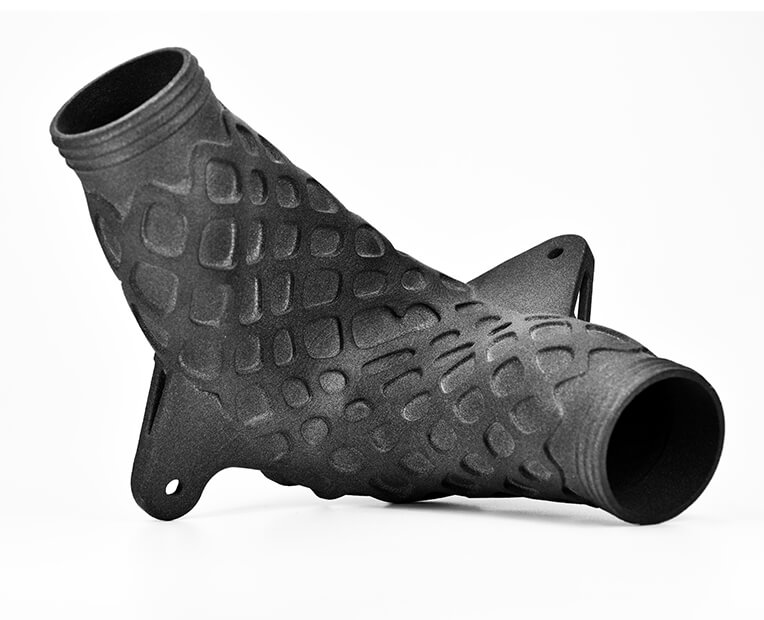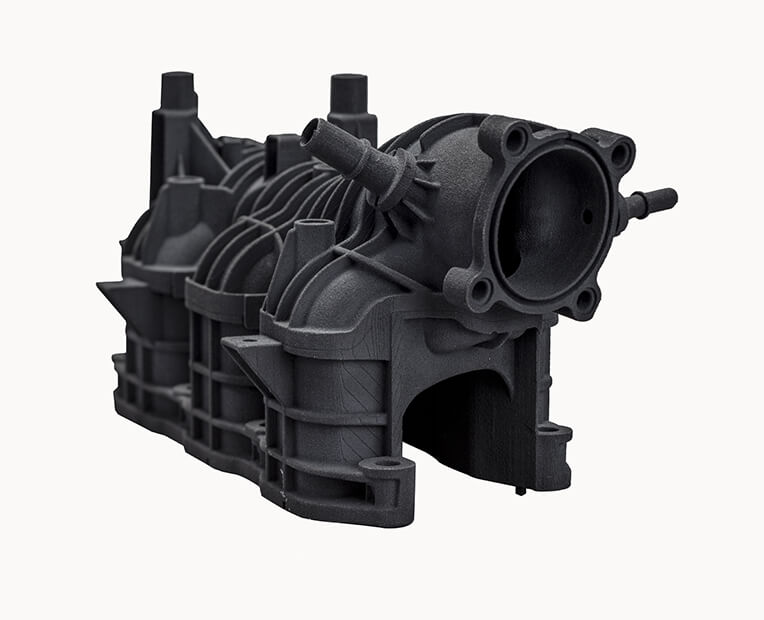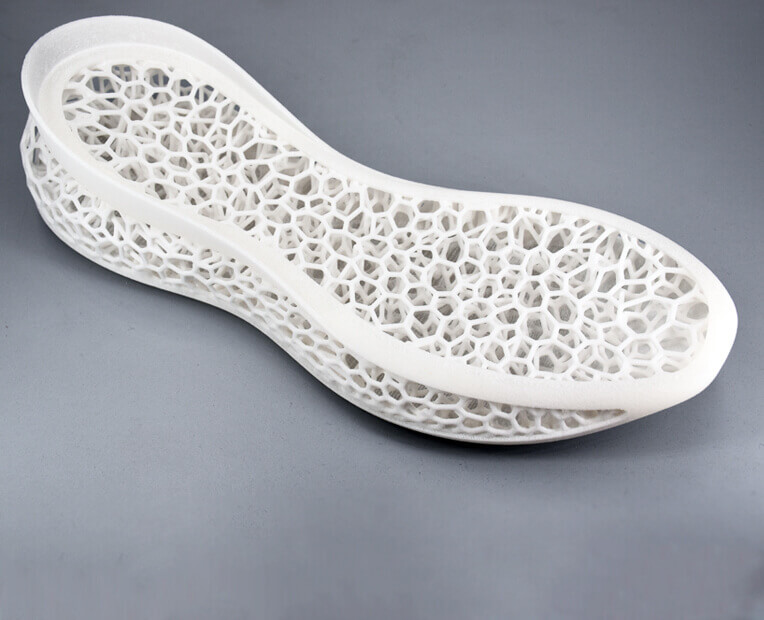What are the characteristics of these materials?
Polypropylene nat 01 (for SLS technology) and the Jet-Fusion Polypropylene (for MJF technology) are very sturdy and rigid materials. The former has a white look, even slightly translucent, while the latter is grey/black. This array of polymers is well-spread in injection molding, for a variety of industries, because they are affordable and present good properties. The top quality of Polypropylene is its chemical resistance, as this material offers great resistance against harsh substances. It is also a very resistant, light material that has a great elongation at break. Polypropylene is hence well-suited for parts subjected to mechanical stress, while its sealing properties allow for fluid container manufacturing.
What are the applications and advantages of these materials?
Polypropylene finds a number of applications in the transportation and automotive industries, in part thanks to its chemical resistance, which makes this material a fit for parts dealing with hydrocarbons. Polypropylene can thus be used for tanks, circuits, or flux conductor manufacturing that may evolve in aggressive environments.
Due to this same quality, Polypropylene is common in many industry fields and is used for tooling or flow conductors. We can mention custom-made flow connectors, which are meant to connect pipes in constrained environments. This material is also utilised in the Medical industry, for example, in orthosis manufacturing. As mentioned previously, Polypropylene is also widespread in injection molding, which means that it is applied to many types of projects.
What makes Polypropylene special is that it presents simultaneous advantages that other materials would tend to offer individually, like sturdiness, rigidity, and chemical resistance.



 Connect with Google
Connect with Google Connect with Facebook
Connect with Facebook


